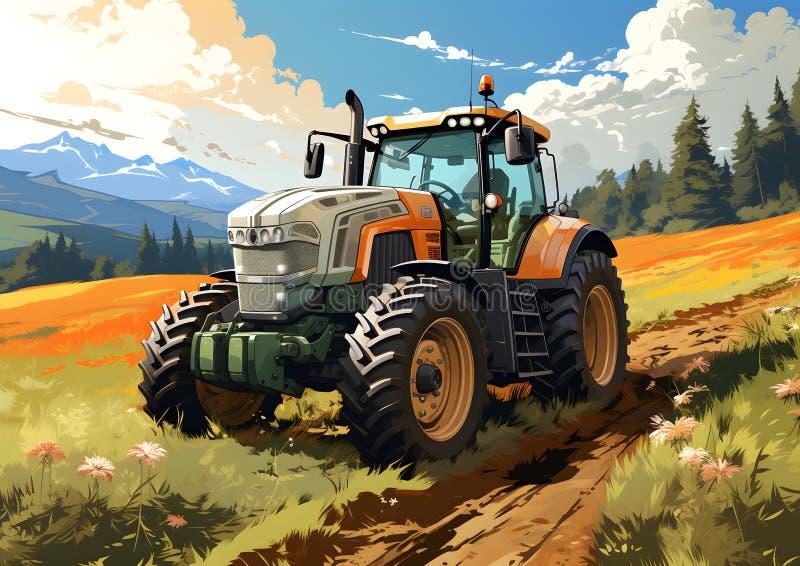The change of American agriculture from horse-drawn implements to motorized machinery marks one of the most significant technological shifts in farming history. Between the late 1800s and mid-1900s, U.S. farms underwent a revolutionary change as steam engines, tractors, and other mechanical innovations gradually replaced animal power. This mechanization not only altered farming practices but also reshaped rural communities, labor patterns, and agricultural productivity across the nation. The transformation of American agriculture from animal-powered to machine-driven operations marked a pivotal shift in farming history. During the early 1800s, farmers relied heavily on horses and oxen to plow fields, plant crops, and harvest yields. A typical family farm maintained several work horses, requiring significant resources for feed and care.
The introduction of steam-powered tractors in the late 19th century initiated the frist wave of mechanization. These massive machines, while revolutionary, were cumbersome and expensive, limiting their adoption to wealthy landowners and large operations. The real breakthrough came with the progress of the gasoline-powered tractor in the early 1900s.
Henry Ford’s Fordson tractor, introduced in 1917, became the first mass-produced, affordable machine that average farmers could purchase.This accessibility sparked widespread adoption of mechanical power on farms across the nation. By 1920, there were approximately 246,000 tractors in use throughout American farmlands.
The advantages of mechanical power quickly became apparent. A tractor could work longer hours than horses, didn’t require rest periods, and consumed fuel only when in use. Unlike horses, tractors didn’t need year-round maintenance, freeing up land previously used for growing feed. This extra acreage could now be dedicated to cash crops, increasing farm productivity and profitability.
The pace of mechanization accelerated during the 1930s and 1940s, despite the Great Depression.The introduction of rubber tires, power take-off systems, and hydraulic implements made tractors more versatile and efficient. Specialized equipment like mechanical cotton pickers and combine harvesters revolutionized specific crop sectors.
World war II further catalyzed farm mechanization. Labor shortages created by military service drove farmers to invest in machinery. Between 1940 and 1945, the number of tractors on U.S. farms doubled to over 2.4 million units. This rapid adoption continued post-war, fundamentally altering rural landscapes and farming practices.
By 1954, the number of tractors surpassed the population of horses and mules on American farms for the first time. This milestone symbolized the complete transition from animal to mechanical power. The shift enabled dramatic increases in farm size and productivity, with fewer workers needed to cultivate larger areas.
Modern precision agriculture represents the latest phase in this evolution. GPS-guided tractors, automated irrigation systems, and data-driven farming practices continue the trajectory of mechanization. Today’s farms operate with sophisticated equipment that would have been unimaginable to earlier generations.
This technological transformation has had profound implications. While it has substantially increased agricultural productivity and reduced physical labor, it has also contributed to rural depopulation and the consolidation of farmland. The journey from horse to horsepower reflects broader changes in American society, economy, and relationship with technology.


